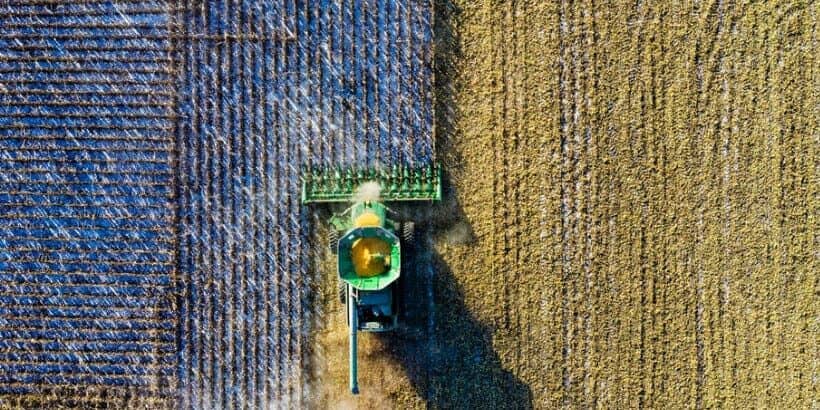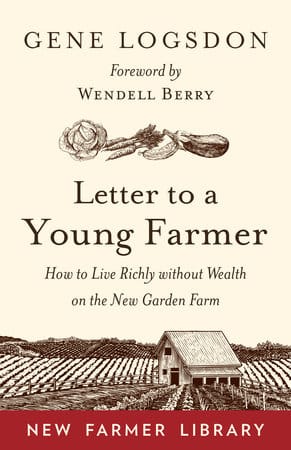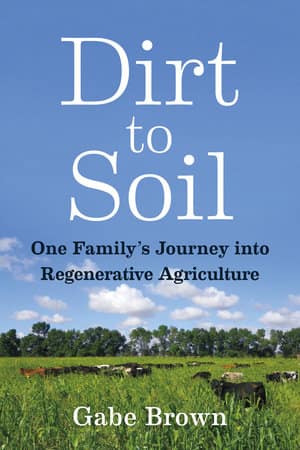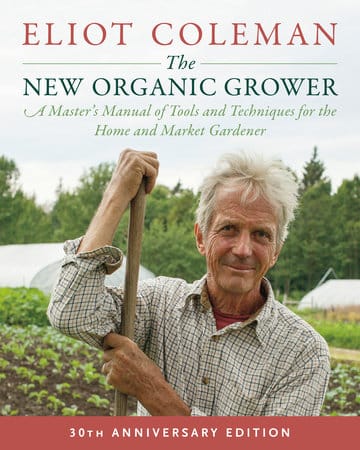Farmers Aren’t Created Equal: The “American Farmer” Fallacy

For those who aren’t in the know, it may seem like all farmers are created equal, but that’s simply not the case. In fact, there is such a wide variety of farmers that it’s nearly impossible to put a label on them. But that doesn’t stop organizations from trying.
The following is an excerpt from Letter to a Young Farmer by Gene Logsdon. It has been adapted for the web.
Whenever I hear a commentator or politician (or sometimes even myself) refer collectively to “The American Farmer,” I know what follows will contain a lot of hot air. There’s no such thing as the American farmer.
There are grain farmers (and there’s tons of difference between corn, rice, and wheat farmers), sugar beet farmers, dairy farmers, hog farmers, sheep farmers, vegetable farmers of many kinds, irrigation farmers, dryland farmers, organic farmers, chemical farmers, greenhouse farmers, urban farmers, market garden farmers, horse farmers, fish farmers, cattle farmers, hop and malting barley farmers, small-fruit farmers, part-time farmers, full-time farmers, make-believe farmers, pot farmers, sunshine farmers, moonshine farmers, and street-corner farmers.
The extreme variation is why it is so difficult to unite them all into one organization. No one has ever been able to do that. Farmers are often in competition with each other, and though they’d never admit it out loud, when corn yields are low in Iowa, the corn farmers of Ohio can’t help but be just a teeny bit gleeful because the market price of corn just might go up.
There are scores of farm organizations as a result of the diversity. Most of them, like the Ohio Ecological Food and Farm Association (OEFFA), are relatively new, very activist, and growing in membership.
The older Farm Bureau, National Farmers Organization (NFO), and National Farmers Union are three groups that try to gain members from all walks of farming life. Farm Bureau has traditionally been the organization of choice for the fatter cats, while the Farmers Union and NFO were safe harbors for those struggling to make their next land payment.
From Farm Bureau I once got a letter scolding me for what I had written. From Farmers Union, I got an award. To show how times are changing, one local chapter of the Farm Bureau recently invited me to give a speech. Talk about your amazing grace.
Farm Bureau is by all accounts the largest general farm organization, but, ironically, their very success may backfire one of these days because the group’s policies have for years favored “get big or get out.” Now the big farms are starting to swallow up one another, which means fewer Farm Bureau members.
And the biggest corporate farms, like the little artisanal farms, don’t have much interest in joining any traditional farm organization. So the Farm Bureau has wisely started a new public relations drive, which piously proclaims that it is for all farmers, even the (ugh) small, part-time, organic ones it has snubbed for years.
Ho ho ho, we are suddenly just one big happy family.
Although the hypocrisy involved here sort of gags my guts, I actually think it is a good idea—another sign that the face of farming is changing. I know some astute Farm Bureau members, and maybe they will have the good sense to push artisanal garden farming as enthusiastically as they support that agricultural nightmare, corn-based ethanol.
Even within the same category, farmers vary all over the place in terms of personality, lifestyle, and political philosophy.
They are generally like most other human beings and, unlike the way farm magazines often portray them—standing staunch and stalwart out in a field like the Archangel Gabriel on Judgment Day—they love to sit around in cafes lying about their corn yields.
They can play a mean round of golf, go crazy at football games, read books, sit on hospital boards, or keep peace in the neighborhood and an eye out for thieves, almost as effectively as sheriff’s deputies can.
Most large-scale commercial farmers tend toward conservatism and vote Republican, but don’t take that for granted. One of the biggest farmers I know (about eight thousand acres of corn and soybeans and counting) is a staunch Democrat.
He says he always makes more money when a Democrat is president. On the other hand, an organic farmer friend, who is very critical of agribusinesses like Monsanto and chemical farmers in general, is a confirmed Republican.
I like to compare both of these guys in my mind to another farmer in these parts who with his wife makes a living by garden farming about two acres and who leans philosophically toward Buddhism.
The most image-busting farm I know about (as I write in 2016) is Will Witherspoon’s Shire Gate Farm, a 660-acre spread raising Animal Welfare Approved (AWA) cattle and chickens on pastures, with no added hormones, sub-therapeutic antibiotics, or feed additives.
Witherspoon is a retired pro football player using his money from that part of his life to show the public there should be a vital connection between sports well played and food well grown. He wants to demonstrate that healthy food from healthy animals can be produced very cost-effectively without polluting the Earth.
As of this writing, he was selling packages of filets and strip steaks on Amazon (my emphasis) at 25 percent off list price 
Most industrial grain farmers truly believe—and really, really are convinced beyond all argument—that they are doing it right with all those acres of corn, wheat, and soybeans: neat and lush and weedless (sometimes), the soil worked to perfect seedbeds, the planter so refined it can insert exactly 33,450 kernels of corn into the soil per acre.
Genetically modified (GMO) crops are just fine in their opinion. On the other hand, the little micro-farmer with his ten acres of organic, artisanal crops is just as firmly entrenched in the opposite opinion. GMOs are satanic.
Those big stretches of perfectly worked soil are an invitation for eroding gullies. I talk to both sides nearly every day and the difference between them, I fear, is too profound to ever change completely. Maybe farming is a religion. Everyone knows he or she is right.
There are enough younger people interested in getting actively into garden farming and growing artisanal foods that by the time I figure out how to categorize them, they won’t be young anymore.
In fact many of them aren’t young now. These newest farmers are quite the social phenomenon. Even the government has discovered them. The USDA grandly announced a new website in October of 2015, the purpose of which is to instruct interested young people in how to get started in farming.
Agricultural experts will no doubt repeat the commonplace advice that beginning farmers have been hearing for a century or more. The advisors mean well. It is just that trying to tell someone how to succeed in farming is about like trying to tell someone how to succeed as an artist, writer, or musician. There are many ways, but the rules all start with the word “if.”
In my experience, the person who is going to succeed in farming (or art) is too independent to go around asking for help from either educators or scientists. He or she just starts doing it. He or she has a calling, a vocation, I believe, not shared by the majority of humankind.
If you read too much about what you have to do to succeed, you will be too discouraged to start. There are too many “if’s” involved. But a good sign of an up-and-coming young farmer is whether he or she likes gardening. Gardening? What does pushing petunias have to do with saving the world from starvation?
Well, if a prospective farmer has had the opportunity and wherewithal to garden and hasn’t done it, he or she is not likely to succeed as a commercial farmer. Prospective garden farmers should be strongly urged to live with the hoe for a couple of years, during which time they will learn many of the rudiments they need to know much better than they would learn from books of instruction.
Coming to grips with a hoe will teach them all about coming to grips with the unpredictable life of facing off against nature. If they have tried gardening but given it up, I doubt that the farming life is for them.
To succeed, it first of all helps to be stubborn to a fault. Bullheadedness is the common denominator of successful farmers. After that, the ones who do succeed are almost always quite suspicious, even prejudiced, against formalized education because educators have historically been so prejudicial against them.
A fairly new book, The Shepherd’s Life by James Rebanks, about farming and shepherding in the mountains of northern England, says it well:
I realized we [farmers] were different, really different, on a rainy morning in 1987. . . . I was thirteen or so years old. Sitting [in a classroom] surrounded by a mass of other academic non-achievers listening to an old battle-weary teacher lecturing us how we should aim to be more than just farmer-workers, joiners, brickies [bricklayers], electricians, and hairdressers. . . .
Her words flowed past us without registering, a sermon she’d delivered many times before. It was a waste of time and she knew it. We were firmly set, like our fathers and grandfathers, mothers and grandmothers before us, on being what we were, and had always been. . . .
I argued with our dumbfounded headmaster that school was really a prison and ‘an infringement of my human rights.’ He looked at me strangely, and said, ‘But what would you do at home?’ Like this was an impossible question to answer. ‘I’d work on the farm,’ I answered, equally amazed that he couldn’t see how simple this was. He shrugged his shoulders hopelessly, told me to stop being ridiculous and go away.
. . . I thought about putting a brick through his window, but didn’t dare. . . .
The idea that we, our fathers, and mothers might be proud, hardworking, and intelligent people doing something worthwhile or even admirable was beyond [our teachers].
Recommended Reads
Recent Articles
Beavers are ecological and hydrological Swiss Army knives. Capable of tackling just about any landscape-scale problem you might confront.
Read MoreAside from the sheer pleasure of telling your friends, straight-faced, that you maintain your garden using something called a “chicken tractor,” there are a slew of other benefits to working the land with a few of your animal friends. Getting rid of pests without chemicals, for one; letting them do the work of weeding and…
Read MoreIf the idea of running a vegetable farm sounds daunting, you’re not alone. What can you do to simplify techniques and reduce expenses? Where do you even begin?
Read MoreWhen you’re walking around the grocery store looking at the vegetables, it’s probably hard to imagine that a century ago there was twice the amount of options.
Read MoreIf you love tomatoes, you probably already know just how many varieties of these summertime staples there are. But do you know what makes each one unique?
Read More








